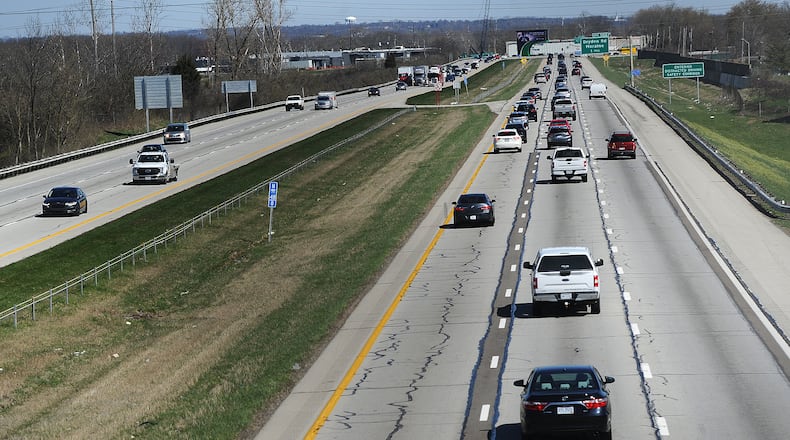“Interstate 75 carries nearly 110,000 vehicles per day, many of which include commercial vehicles supporting local industry, commuters and the casual traveler,” Wiltheiss said. “Without I-75 these motorists would need to traverse the local road network.”
Renewing the life of that stretch of road will ensure the thoroughfare remains in service for many years to come, he said.
The project would completely reconstruct the southernmost 2.7 miles of the more than 4-mile project, taking it down to the base and replacing the existing pavement and pavement markings.
That’s because the longevity and quality of a pavement surface relies on the strength of the base that it is built upon, Wiltheiss said.
“Over time the base pavement degrades to a point that the surface fails much more quickly, even if the surface is restored,” he said.
Each year, ODOT evaluates it’s pavement using a Pavement Condition Rating by looking at factors like rutting and cracking, Wiltheiss said. Each year this rating can experience a drop of two to three points. However, that section of roadway has experienced “a much more rapid decline,” as yearly point drops there have been greater than what is typically experienced, he said.
“This alerted subject matter experts in our Office of Pavement Engineering, and through further investigation into the life of the pavement, it was determined to perform a major rehab of the pavement,” Wiltheiss said.
The northern segment of the project, about 1.5 miles, will be resurfaced and a median barrier located in that segment will be replaced, he said.
As opposed to the older “Jersey” shaped barrier, the new barrier will have a single slope shape, which will help to improve how vehicles are redirected to the roadway. In addition, the new wall will be taller to help with the glare of the headlights of oncoming traffic, Wiltheiss said.
The southbound deceleration ramp from I-75 to Dryden Road, which is 550 feet, will be extended approximately 100 feet.
“Lengthening the ramp ... will allow vehicles a greater distance to decelerate before entering the tight curve upon leaving the interstate,” Wiltheiss said. “This will improve safety and help to prevent vehicles from leaving the roadway by entering the curve too fast.”
Within the corridor, storm sewer facilities, lighting, guardrail, sign posts and other items constructed along the roadway will be replaced or upgraded as needed, he said.
The project is expected to begin in fall 2022 and require approximately two years to complete.
“The overall length of the roadway is just under 3 miles,” Wiltheiss said. “However, this is over 22 miles when breaking it down into one lane of traffic. ODOT policy places limitations on how projects are constructed to ensure traffic safety and minimal traffic delays.”
Those limitations include maintaining three lanes of traffic at all times, a minimum 1.5 foot of shoulder through the work zone, drop offs in close proximity to travel lanes and overall thickness of how much asphalt can be placed at one time, he said.
“These factors cause multiple lane shifts and phasing of the construction project, which in turn means a length time frame for the project,” Wiltheiss said.
Traffic on the I-75 will be maintained, although lane closures and shifts will be necessary. Ramp detours of two to three months each may be necessary. Signed detours will be provided.
People wishing to offer comment on the effect of the project on local residents may call 937-497-6721 or visit www.tinyurl.com/odot2022project by April 30.
About the Author

